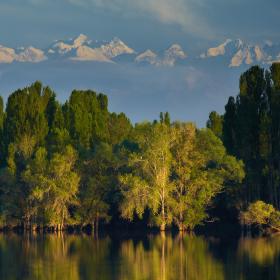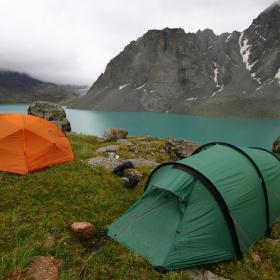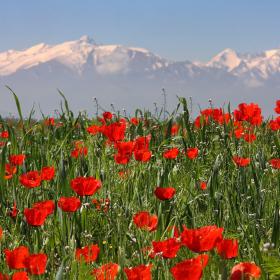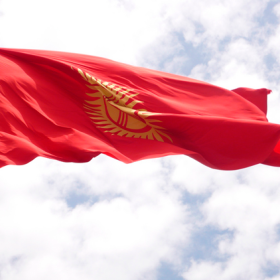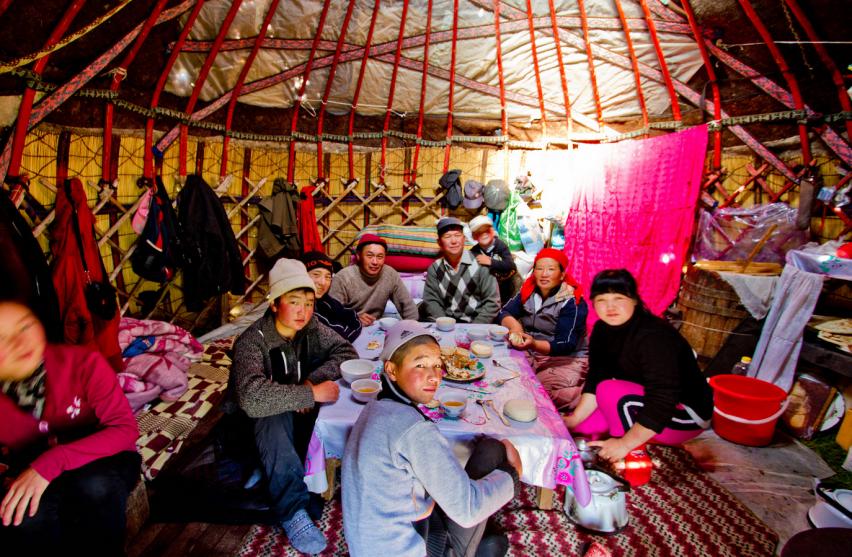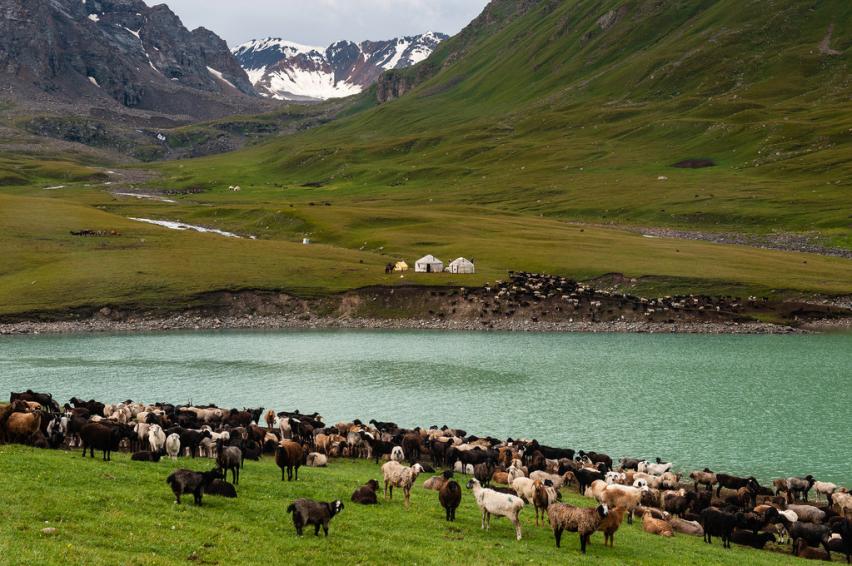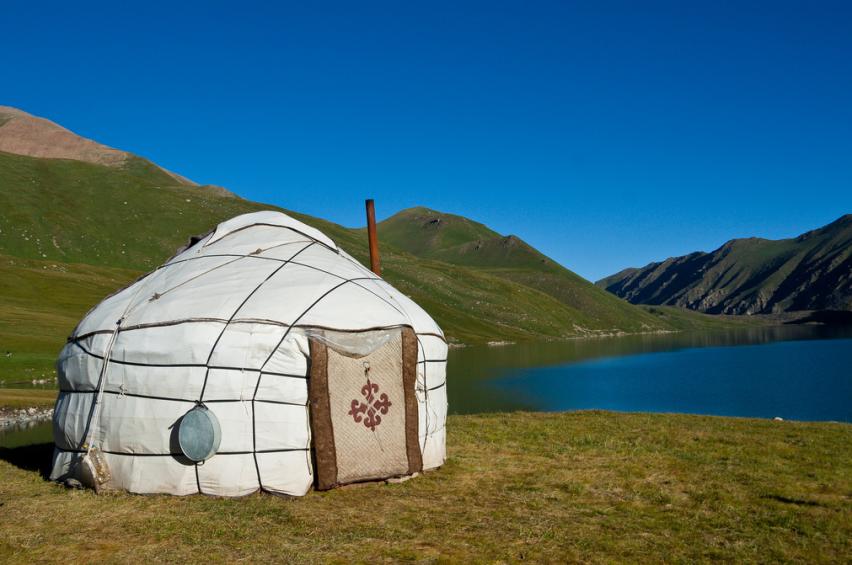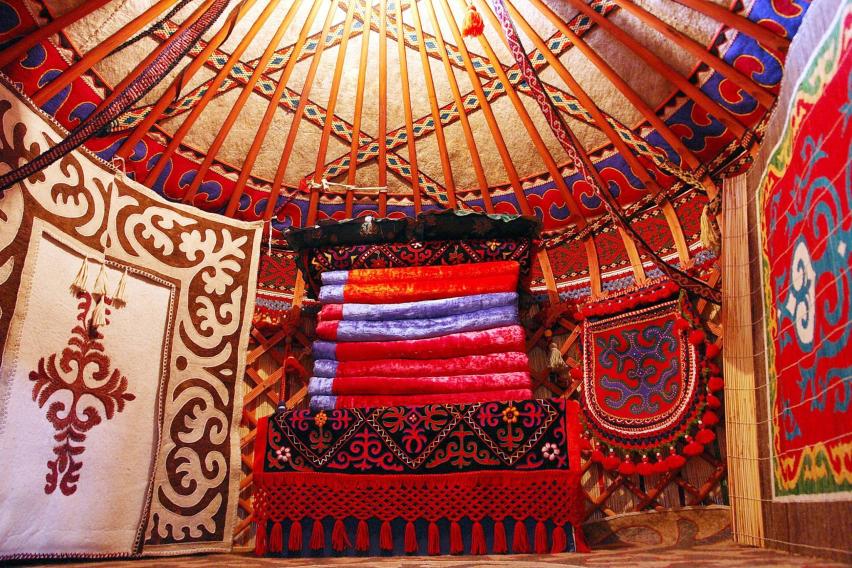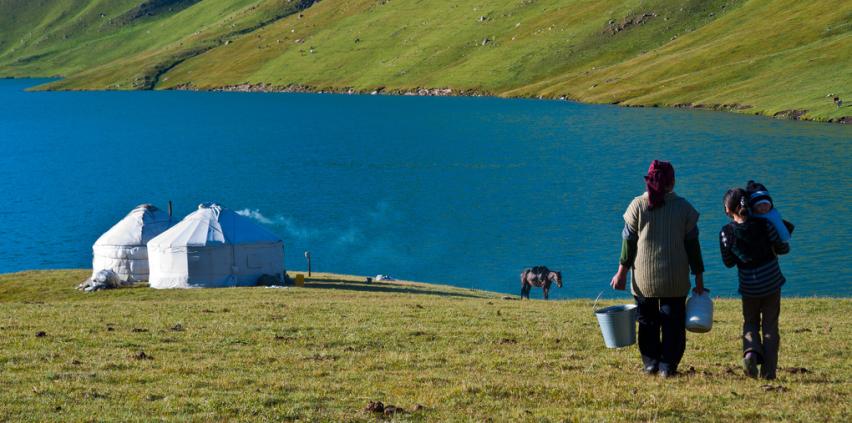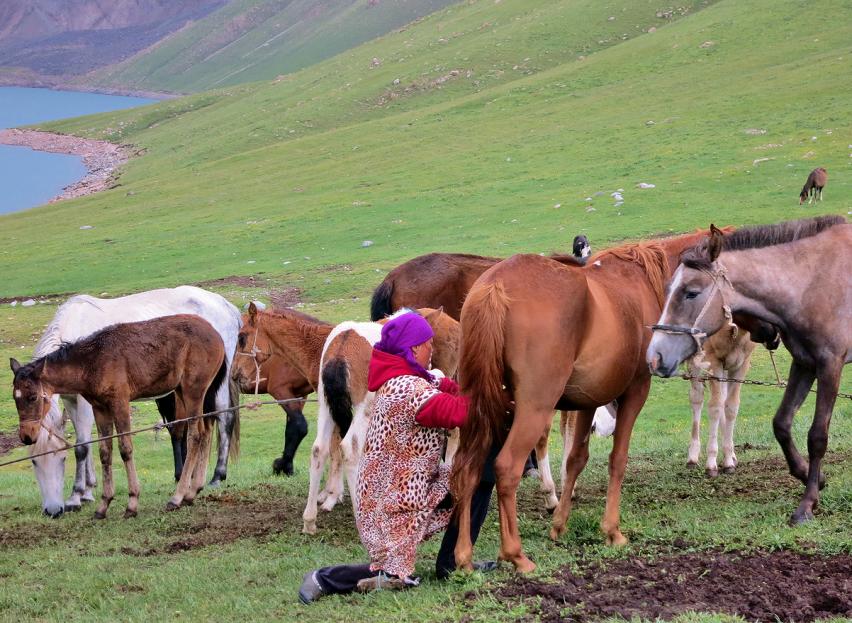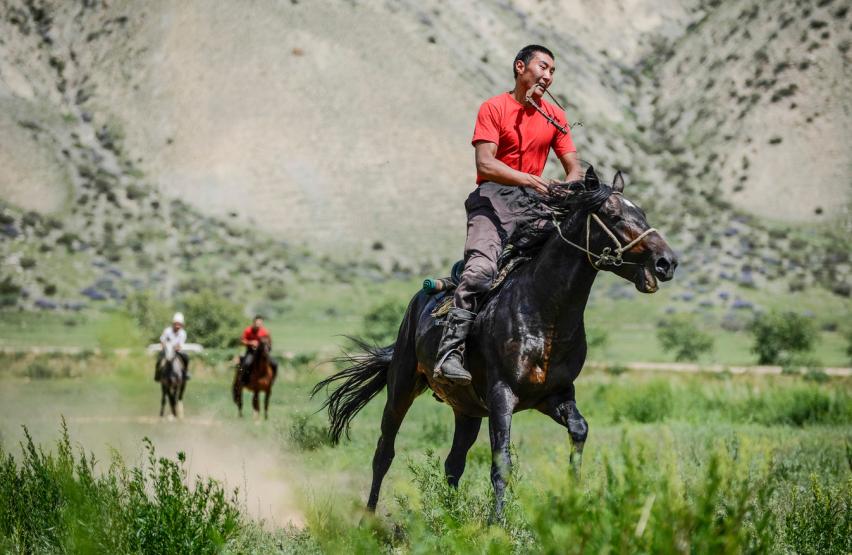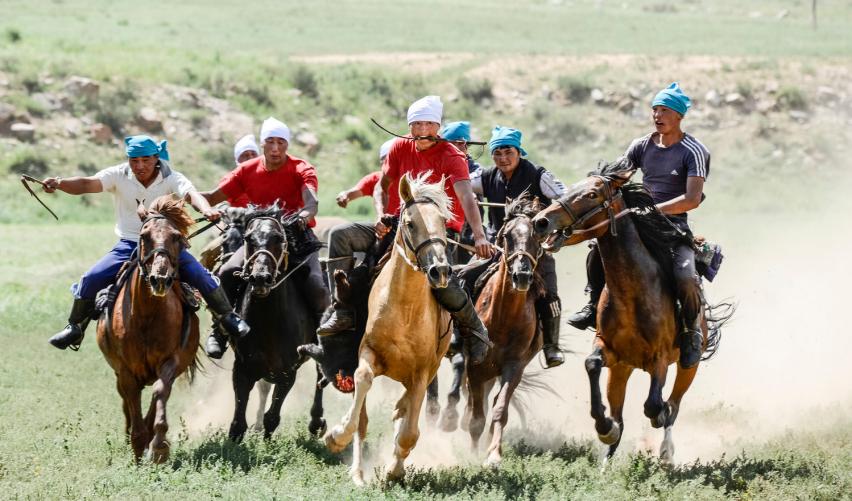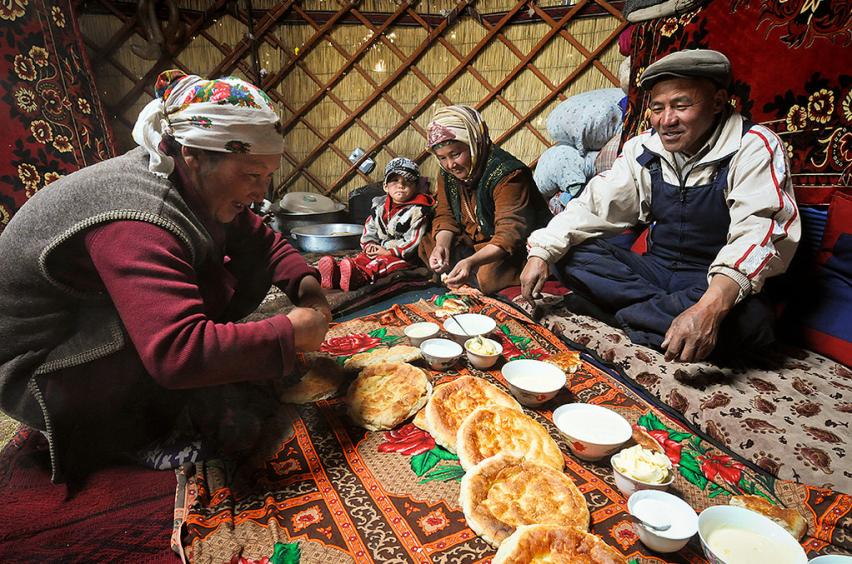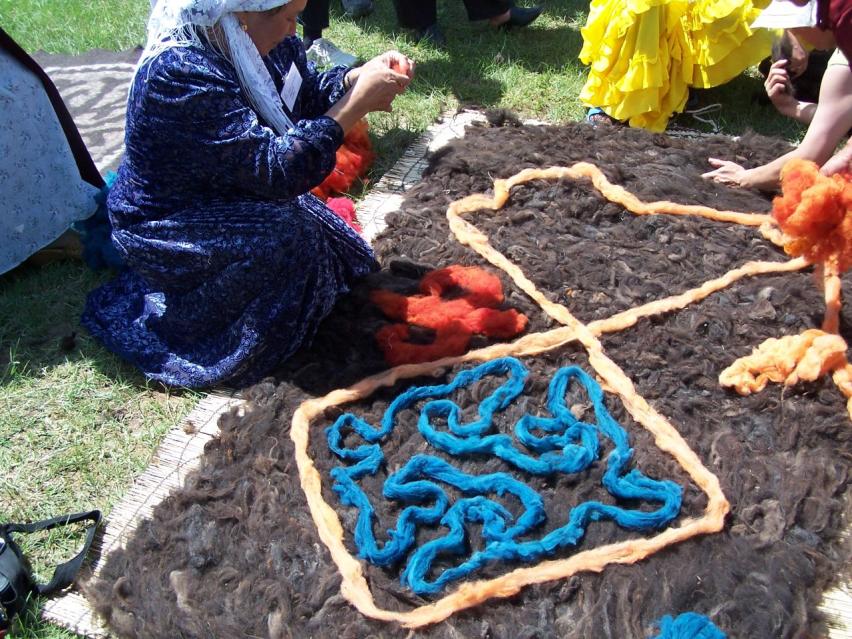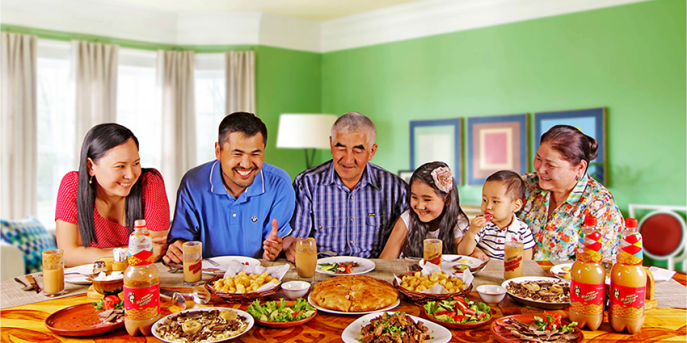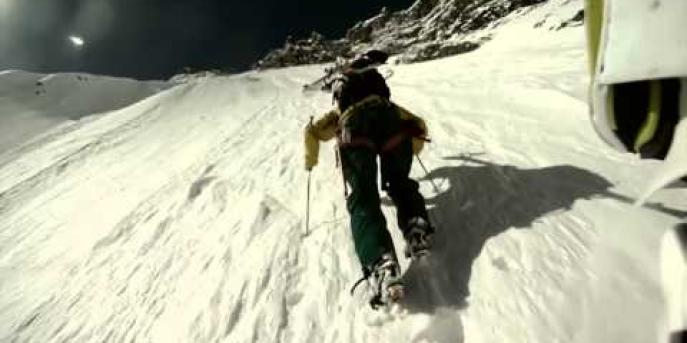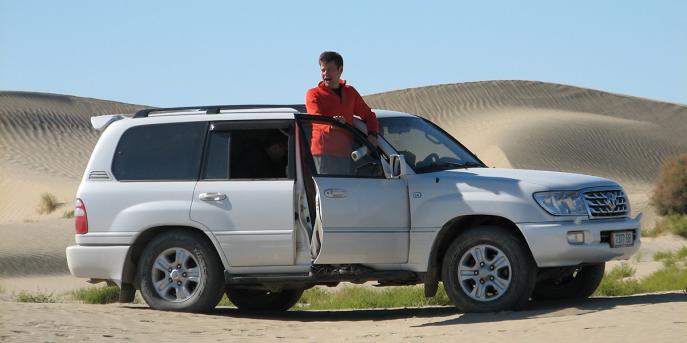Kyrgyzstan: The Land of Nomads
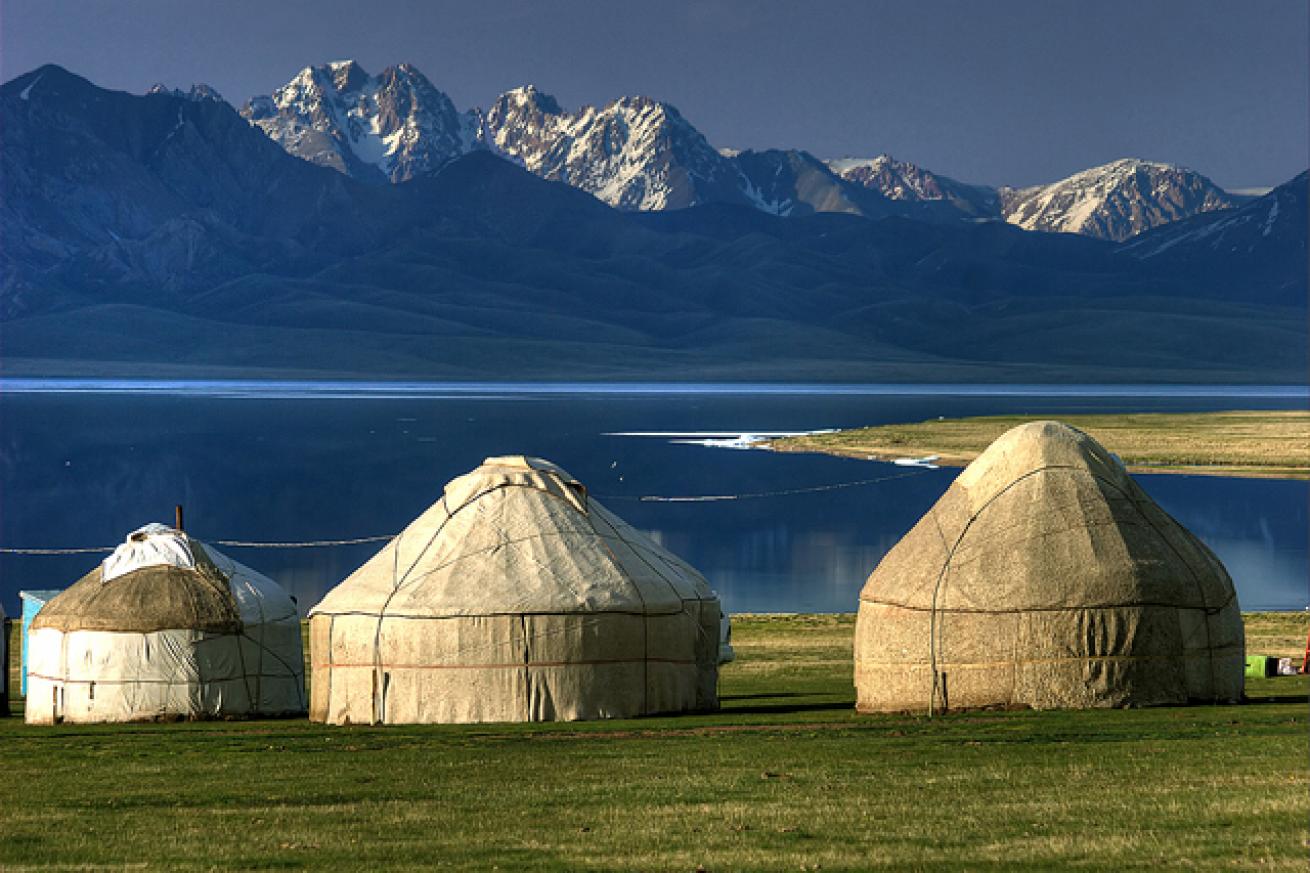
Personally, I’ve always found nomadic life to be kind of exotic and intriguing. The first Native Americans, the Maasai in Africa, the tribes of Central Asia. Nomads can live off the land and move with its ebb and flow. They’re resourceful and self-sufficient. They know how to and actually make many of their daily necessities by hand. In my mind, that earns serious props.
Before collectivization in the mid-1900s, Kyrgyzstan was purely nomadic. Kyrgyz tribes lived out of yurts, not cities, herding livestock. Kyrgyz yurts are, in their most basic explanation, round, felt covered tents. A yurt has a framework of wooden latticework and curved poles. The latticework comes straight off the ground at a 90 degree angle, then after about 4 feet, curved poles are attached to the top of the latticework, reaching inward towards a peak that leaves a circular opening to allow sunlight in and smoke to escape. All of this is then donned with felt to keep out the elements.
Of course when collectivization brought on by the Soviet Union entered the picture, things changed. Cities and villages were built. A lot of Kyrgyz people settled down. However, not all nomads followed the change. There are still a large number of nomads that either never settled down at all, or returned to a nomadic way of life after independence from the Soviet Union in 1991. They live all over the mountains of Kyrgyzstan today.
Kyrgyz nomads are expert horsemen. They use horses for day-to-day transportation across the jailoos (summer pastures), shepherds using them to herd their herds over the mountainsides. If you’re visiting Kyrgyzstan, you might see nomads playing various ethno-games that highlight their horsemanship skills. My favorite game is when riders on horseback runs at full gallop towards a series of flags or coins, lean over while still on the horse, and pluck the flags/coins off the ground. The person that can collect the most is the most skilled and winner of the competition.
Another popular game is called Ulak-Tartysh in Kyrgyz, but in English, the name “Dead Goat Polo” has caught on. Basically, 2 teams of men on horseback fight to gain possession of a headless goat, run over to the opponent’s goal while carrying it, and try to lob it into the goal. The winner gets the goat in the end and as you can imagine, the meat is very tender at this point, which makes for an excellent meal.
As far as nomadic food goes, lots of traditional Kyrgyz dishes center around meat, monti and besh barmack to name a couple. Monti is steamed dough stuffed with meat and onions. Besh Barmack is shaved meat served with noodles. Since nomads are herders, then also have plenty of milk at their disposal. It’s not uncommon to find anywhere between 4-6 dairy products on a nomad’s table during a meal. During a toi, party, other sides might include a salad of fresh vegetables, homemade bread, jam, and sweets.
Kyrgyz nomads are also famous for their felt handcrafts since they have felt in abundance. One of the most common is called a shirdak, which is a thick, felt, rectangular rug sporting Kyrgyz designs in various bright colors. They are very sturdy and used to make the floor of a yurt so people aren’t stepping, sitting, or sleeping directly on the ground.
There are so many fascinating facets of Kyrgyz life and culture. If you’re interested in the life of nomads in Kyrgyzstan, nomadic families are starting to open up their homes to foreigners who would like to learn more about their way of life. It’s actually a great way to support the local economy in Kyrgyzstan and learn some skills integral to daily nomadic life. So during your travels around Kyrgyzstan, take advantage of the opportunity and learn more about nomadic life. There no better place than directly from the source.

